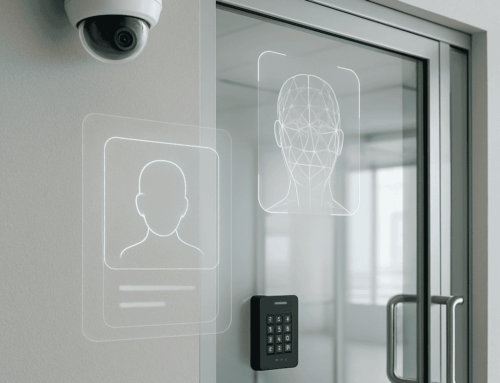The Ultimate Guide to Laptop Imaging: A Comprehensive Overview

Laptop imaging is an increasingly crucial process in software deployment and helps ensure new systems’ efficient and effective deployment. Laptop and computer imaging encompass creating and formatting software on a laptop before it is released to the public. Imaging includes settings and programs necessary for a software device to function properly and guarantees that laptops are ready for use immediately after delivery.
Understanding the ins and outs of laptop imaging is crucial for IT professionals looking to simplify software deployment. This article will provide critical information about laptop and disk imaging to prepare you for the process and supply you with education to make everything run smoothly.
What is Laptop Imaging?
Laptop imaging, also known as computer or disk imaging, creates a replica or snapshot of a computer’s entire hard drive and software to be installed on other systems. Imaging is essential when IT professionals create a standard configuration in specific circumstances, such as providing new employees with the proper computer system to work with a team.
Along with the accessibility and ease of deployment that laptop imaging allows, the imaging process is crucial for backup solutions. It is built to protect against data loss caused by hardware failures, accidental data deletions, or malicious activities. Images can be deployed to restore laptops to a previous working state and can also be deployed simultaneously among numerous systems to ensure consistency in the installation process.
There are several components to a laptop image, including the following:
- Operating system: a laptop image includes the entire operating system installed on a computer, including the core files, system libraries, and configuration settings required for proper functioning.
- Applications: imaging also includes necessary applications and programs installed on the laptop, including pre-installed software and additional, user-installed applications.
- User data: the laptop image captures all user-generated data stored on the computer, including documents, photos, and other files saved on the storage system.
- System settings: laptop images include relevant system settings, preferences, configurations related to the display, network connections, power options, and other customizable elements of the laptop’s operating system.
- System files: a laptop image encompasses system files and directories essential for the proper functioning of the operating system, including system libraries, configuration files, boot files, and other system-level components.
How Laptop Imaging Works
Computer imaging is necessary for IT teams looking to keep operations consistent and all team members on the same page. However, many IT professionals know how the laptop imaging process works.
Below is a breakdown of disk imaging to simplify the process and ensure that your team is ready to take on the imaging responsibility for a seamless setup and installation.
Creating a Laptop Image
Disk imaging begins by creating an initial laptop image. This process requires software and settings capture, where specialized imaging software collects all of the device’s applications, operating system files, system settings, and user data on a laptop’s hard drive. The capturing process ensures that all data is replicated accurately and typically involves booting the computer from a separate device to prevent conflicts with the running operating system.
After the software and settings capture, the laptop image is created by generating installation files. The generated image file contains all captured data, a compressed or archived representation of the entire storage system. This image file is stored on a separate device, such as an external hard drive or network-attached storage (NAS) device.
Deploying the Laptop Image
There are several methods for deploying a laptop image once it’s created. Below is an overview of the primary deployment methods used in laptop imaging.
- Offline deployment: this method involves connecting a target laptop to the storage device containing the laptop image, such as an external hard drive. The imaging software restores the image onto the target laptop’s hard drive to complete the process. Offline deployment is ideal when deploying images to individual computers or operating without a reliable network connection.
- Online deployment via a local network: with online deployment, the laptop image is stored on a network server or a NAS device. The target laptop is then connected to the local network, and the imaging software accesses the image over the network to deploy it onto the target laptop’s hard drive. This deployment method is commonly used in enterprise environments where multiple laptops require simultaneous setting up with the same image.
- Cloud-based deployment: the final deployment method involves storing a laptop image in a cloud storage solution. The target laptop is connected to the internet, while the imaging software retrieves the image from the cloud and deploys it onto the computer’s hard drive. This flexible and convenient method allows for deployment from any location with an internet connection.
Benefits of Laptop Imaging
Various benefits of laptop imaging make it a popular option for many IT professionals looking to deploy the same solution across team members efficiently. The following are the top advantages of computer imaging for IT professionals:
- Enhanced efficiency in PC lifestyle management: by creating a laptop image with a standardized configuration, organizations ensure consistency across all laptops, reducing the time and effort required to individually set up each laptop with the desired operating system, applications, and settings. Imaging enhances efficiency by quickly deploying images across multiple laptops, reducing the time and costs associated with manual setup and configuration. Automating the deployment process allows administrators to deploy effective solutions quickly while simplifying future processes like installing updates, patches, and software upgrades for a more efficient system. This process greatly simplifies maintenance tasks and reduces time spent on individual updates.
- Improved endpoint security and compliance management: laptop imaging includes standardized security configurations to ensure consistent security measures across all devices, including pre-configured settings, firewall rules, and antivirus software. Imaging also helps with rapid recovery from security incidents and ensures that, in the event of a security breach, there is minimal downtime. Imaging also maintains compliance with regulations and policies to ensure that all organizations meet specific configuration requirements across all devices.
Types of Laptop Imaging
There are two primary types of laptop imaging: sector-based and file-based imaging. Sector-based imaging encompasses creating an image, called a “golden image,” a replica of a laptop’s hard disk containing the operating system, software, and drivers, and applying the overall image to another device. While sector-based imaging is effective, issues can arise because of the need to create various golden images for all different hardware models and software, which can rack up high costs.
Another imaging option, file-based imaging, is a more flexible imaging option than sector-based processes. File-based imaging creates laptop images with only the necessary, unique files from the initial machine. This process offers advanced control over a laptop’s operating system files and software to develop the golden image. File-based imaging allows teams to create disk images compatible with any model, significantly simplifying deployment and saving space and money.
Choosing the Right Laptop Imaging Software
Not all laptop imaging software options are equally effective, and depending on your unique organizational needs, you might consider one software over another. First, it’s essential to consider the following factors when selecting laptop imaging software:
- Does the software support different hardware models and user groups?
- Does your solution need to support remote endpoints?
- What does the installation and setup process entail?
- Can the software maintain and update images?
- What modes of deployment does the software support?
- What file formats does the software use?
- How scalable is the software?
- Does the software provide access to critical support?
- What payment model does the software follow?
- Does the software offer free or paid options?
- Does the software include a free trial?
- What licenses are compatible with the software?
Step-by-Step Guide to Laptop Imaging
Depending on the computer imaging method chosen, there are different processes to navigate laptop imaging properly. The first method involves imaging a computer with Windows Backup and Restore utility, and is possible through the following steps:
- Open system image backup on a Windows device. Select “Create a system image.”
- Select a location to store the backup image, then select “next.”
- Click on the hard drives and partitions you want included in your backup file, then select “next.”
- Double-check the settings and select “Start backup.”
You can also perform laptop imaging with AOMEI Backupper Standard, a popular and free-to-use backup software.
- Download and install the AOMEI Backupper Standard software
- Run the tool. Select “Backup” and “Disk backup” once you launch the application.
- Choose “Add disk” to select the hard drive included in the backup and recovery.
- Select a destination path for the image backup.
- Select “Start backup” to begin the backup and imaging process.
Best Practices for Successful Laptop Imaging
Successful computer imaging requires adherence to the best practices necessary during the imaging process. Below is a brief overview of the best practices for a successful laptop imaging process:
Starting Fresh and Identifying End Users
When implementing disk imaging, starting with a fresh and clean base image is crucial. Avoid using an image that has accumulated unnecessary software, files, or settings over time, and instead, begin with a clean installation for the operating system and essential applications.
Additionally, identify and understand the specific needs of different end users. Consider your organization’s various roles, departments, or user groups to customize the image to include all applications and configurations for each group.
Verifying Compatibility and Maintaining Drivers
To ensure successful laptop imaging, it’s critical to verify the compatibility of the image with the target computers. Consider the hardware specifications and ensure the image supports all necessary drivers and configurations for the deployed laptops. It’s best to maintain a library of updated drivers and test compatibility with the image to avoid any issues during deployment.
Regularly Auditing the Master Image and Documenting Changes
Frequently auditing the master image is crucial to ensure its effectiveness and accuracy. This process helps identify outdated and unnecessary components that can be removed from the image to reduce its size and improve efficiency.
Documenting any changes to maintain transparency and ensure reproducibility will simplify the future updating process. Maintain a detailed record of all modifications, updates, and configurations applied to the image over time.
How IESS Can Help
Laptop imaging is vital for many IT professionals looking to operate seamlessly and efficiently. i.e. Smart Systems ensures the proper installation and maintenance of all technical systems so customers can build solutions that are easy to operate and effective. Finding the best IT help is possible when you turn to IESS for all your IT concerns. Contact us today to find out more about the i.e. Smart Systems solution.
About i.e.Smart Systems
i.e.Smart Systems is a Houston, TX based technology integration partner that specializes in design and installation of audio/visual technology and structured cabling. For more than three decades, our team of in-house experts has partnered with business owners, architectural firms, general contractors, construction managers, real estate developers, and designers in the Houston market, to deliver reliable, scalable solutions that align with their unique goals.




